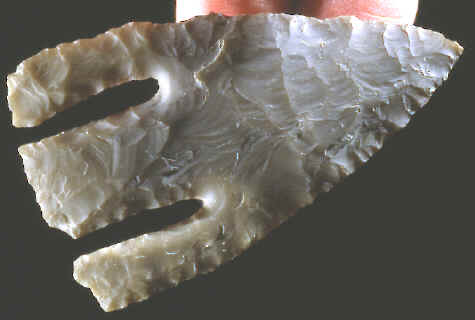|
ANDICE POINT
This Andice point was found several years ago on the Gault sit by David
Olmstead in Williamson County, Texas. Complete examples like this one
are rare. Their fragile barbs and basal stems usually did not survive
intact. Resharpening and breakage from use left most of them damaged.
This
example was probably
resharpened at least one or more times.
It was made of Texas chert, possibly Georgetown and measures 2 3/4
inches (7 cm) long and 1 5/8
inches (4.1 cm) wide. The notches measure 15/16 of an inch (2.3 cm)
deep. ANDICE POINTS
Andice points were named for examples excavated by J.E. Pearce from the
Gault site in 1929 near the town of Jarrell, Texas. These points were
named after the town of Andice which is located a few miles west of the
Gault site. |
|
"REFERENCES"
1985,
"Selected Preforms, Points, and Knives of the North American Indians,
Vol. I," Calf Creek, by Greg Perino, p.62. |
